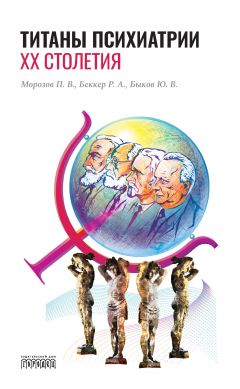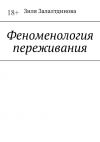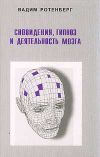Текст книги "Титаны психиатрии XX столетия"

Автор книги: Роман Беккер
Жанр: Биографии и Мемуары, Публицистика
Возрастные ограничения: +16
сообщить о неприемлемом содержимом
Текущая страница: 11 (всего у книги 38 страниц) [доступный отрывок для чтения: 12 страниц]
Э. Крепелина номинировали на Нобелевскую премию по физиологии и медицине 17 лет подряд, в общей сложности восемь раз. В первый раз он был номинирован на премию в 1909 году Р.Э. Гауппом, затем в 1911 году – А. Майером, дважды – в 1917 и в 1922 годах – О. Блёйлером, в 1923 году – О. Бумке, в 1925 году – Дж. Мингаззини и последний раз (в 1926 году) – В. К. Вейгандтом.
Для историков психиатрии представляет особенный интерес мотивировка последнего выдвижения кандидатуры Э. Крепелина на соискание Нобелевской премии. В выступлении перед Нобелевским комитетом, обосновывая номинацию Э. Крепелина на премию, В.К. Вейгандт заявил, что до Э. Крепелина положение психиатрии было катастрофически ненаучным и что до него и в психиатрии в целом, и в классификациях психических заболеваний, в частности царили хаос и неразбериха. Вейнгардт также сообщил Нобелевскому комитету, что именно Э. Крепелин ввел в психиатрию методы экспериментальной психологии и тем самым способствовал улучшению нашего понимания психических заболеваний новым, ранее неизведанным способом.
Однако выступление В.К. Вейгандта перед Нобелевским комитетом стало причиной неожиданного поворота. Когда члены Нобелевского комитета, согласившись с тем, что вклад Э. Крепелина в психиатрию очень велик, попросили В. К. Вейгандта в соответствии с правилами номинации на Нобелевскую премию указать на какое-либо конкретное открытие номинанта (то есть Э. Крепелина), которое, по мнению номинатора, заслуживает Нобелевской премии, то В. К. Вейгандт не смог этого сделать – и именно потому, что вклад Э. Крепелина в психиатрию слишком велик, системен и не сводится к одному открытию. С такой же трудностью сталкивались и авторы предыдущих номинаций Э. Крепелина на Нобелевскую премию.
В. К. Вейгандт был вынужден отказаться от повторной попытки номинировать Э. Крепелина и в следующем году предложил в качестве кандидата на Нобелевскую премию по физиологии и медицине Юлиуса Вагнер-Яурегга – за его открытие маляротерапии прогрессивного паралича. Как мы знаем, эта номинация имела успех, и Ю. Вагнер-Яурегг стал первым в истории психиатром, получившим в 1927 году Нобелевскую премию именно за работу в области психиатрии.
Заключение
Из литературы, посвященной научному вкладу и наследию Эмиля Крепелина, его влиянию на современную психиатрию, понятно, что он является одним из наиболее значимых и влиятельных психиатров XX века. По существу, именно Э. Крепелин, впервые заговоривший о важности изучения не только клинической симптоматики и феноменологии, но и характера течения психических заболеваний, их типичного исхода и прогноза для их правильной диагностики и классификации и изобрел лонгитудинальный метод, является отцом всей современной диагностической классификации – по справедливости называемой «неокрепелинианской». Не менее важно и то, что именно Э. Крепелин впервые объединил под «зонтиком» деменции прекокс такие считавшиеся до него совершенно разными хроническими психозами, как «кататония», «гебефрения» и «паранойя с неблагоприятным прогнозом», а под «зонтиком» МДП – различные типы циркулярных и периодических аффективных расстройств.
Введенная Э. Крепелиным «крепелиновская дихотомия» МДП и деменции прекокс, несмотря на существенный пересмотр и уточнение, продолжает сохранять свое значение и сегодня, будучи положена в основу классификации этих групп расстройств как в МКБ-10, так и в DSM-5.
Кроме того, к вечным заслугам Э. Крепелина перед психиатрией следует причислить то, что он впервые поставил психиатрию на строго научную основу, впервые применил в ней методы экспериментальной психологии, постулировал возможность и целесообразность изучения головного мозга и психики как «черного ящика», освободил психиатрию и от примитивного материализма, «мозгового догматизма» и «мозговой мифологии», от зацикленности на изучении посмертной анатомии и гистологии головного мозга и от религиозно-мистических, психологизаторских и морализаторских теорий.
Э. Крепелин стал отцом всей современной психосоматической медицины, в том числе психоэндокринологии и психоиммунологии. Он заложил ее краеугольный камень – постулат о том, что душа и тело неразрывно и тесно связаны, что душа имеет материальный субстрат – головной мозг и что нарушения в функционировании органов тела могут оказывать влияние на психику или вызывать психические заболевания только и исключительно через влияние на функционирование головного мозга. Таким образом, он освободил психосоматическую медицину и от мистики и религии, и от примитивных «соматизирующих» теорий, вроде тех, что связывали истерию у женщин с «нарушением положения матки в теле».
Вдобавок ко всему Э. Крепелин является родоначальником транскультуральной психиатрии, а также автором первого в мире труда по экспериментальной психофармакологии, в котором описаны впервые проведенные количественные эксперименты, исследовавшие действие доступных в его время психоактивных веществ, таких как бромиды, морфин, кофеин, хлоралгидрат.
Литература
1. Тиганов А.С. Патология психического развития // Библиотека Научного центра психического здоровья РАМН [Электронный ресурс] – Режим доступа URL: http://www.psychiatry.ru/lib/54/book/36. – 2004.
2. Alic M. Kraepelin, Emil (1856–1926). Gale Encyclopedia of Psychology, 2001.
3. Allik J., Tammiksaar E. Who was Emil Kraepelin and why do we remember him 160 years later? // Trames: A Journal of the Humanities and Social Sciences. – 2016. – Vol. 20. – № 4. – P. 317.
4. American Psychiatric Association Mental Hospital Service. Diagnostic and Statistical Manual. Mental Disorders. Washington, DC: American Psychiatric Associaton; 1952: 31ff.
5. Ash MG. The Uses and Usefulness of Psychology. Ann Am Acad Pol Soc Sci 2005; 600: 99-114.
6. Bauer, Heike. The Hirschfeld Archives: Violence, Death and Modern Queer Culture. Philadelphia: Temple University Press, 2017.
7. Becker K., Steinberg H., Kluge M. Emil Kraepelin's concepts of the phenomenology and physiology of sleep: the first systematic description of chronotypes // Sleep medicine reviews. – 2016. – Vol. 27. – P. 9–19.
8. BernetB. (2013). Schizophrenie. Entstehung und Entwicklung eines psychiatrischen Krankheitsbilds um 1900. Zurich: Chronos.
9. Berrios G.E., R. Luque J. Villagrán (2003). Schizophrenia: A Conceptual History. In: International Journal of Psychology and Psychological Therapy 3, (2), S. 111–140.
10. Bringmann, W. G., U. Voss, and G.A. Ungerer (1997). Wundt's laboratories. In W.G. Bringmann, H.E. Lück, R.S. Miller, and C.E. Early, eds. A pictural history of psychology, 126–132. Chicago: Quintessence Publishing.
11. Bumke O. Die gegenwärtigen Strömungen in der Psychiatrie. Berlin, Julius Springer Verlag, 1928.
12. Burgmair W., Weber M. Das Geld ist gut angelegt, und du brauchst keine Reue zu haben': James Loeb, ein deutsch-amerikanischer Wissenschaftsmäzen zwischen Kaiserreich und Weimarer Republik. Historische Zeitschrift 277 (2003): 343–378.
13. Chamberlin J.E., Gilman S.L. (ed.). Degeneration: The dark side of progress. – Columbia University Press, 1985.
14. Craddock N., Owen M.J. The beginning of the end for the Kraepelinian dichotomy // The British Journal of Psychiatry. – 2005. – Vol. 186. – № 5. – P. 364–366.
15. Decker H.S. The psychiatric works of Emil Kraepelin: a many-faceted story of modern medicine // Journal of the history of the neurosciences. – 2004. – Vol. 13. – № 3. – P. 248–276.
16. Steinberg H., Carius D., Fontenelle L.F. Kraepelin's views on obsessive neurosis: a comparison with DSM-5 criteria for obsessive-compulsive disorder // Revista Brasileira de Psiquiatria. – 2017. – Vol. 39. – № 4. – P. 355–364.
17. Demily C., Jacquet P., Marie-Cardine M. How to differentiate schizophrenia from bipolar disorder using cognitive assessment? // L'Encephale. – 2009. – Vol. 35. – № 2. – P. 139–145.
18. Dowbiggin I. Degeneration and hereditarianism in French mental medicine 1840-90: psychiatric theory as ideological adaptation // The anatomy of madness: essays in the history of psychiatry. – 1985. – Vol. 1. – P. 188–232.
19. Ebert A, Bar K.J. Emil Kraepelin: a pioneer of scientific understanding of psychiatry and psychopharmacology // Indian journal of psychiatry. – 2010. – Vol. 52. – № 2. – P. 191.
20. Kraepelin E. Dementia praecox, Dementia praecox and paraphrenia. E. & S. Livingstone; Edinburgh: 1919, pp. 181–184.
21. Engmann B., Steinberg H. Emil Kraepelin's time in Dorpat-Did this stay made marks in Russian and Soviet psychiatry? // Fortschritte der Neurologie-Psychiatrie. – 2017. – Vol. 85. – № 11. – P. 675–682.
22. Engstrom E.J. (1991). Emil Kraepelin. Psychiatry and public affairs in Wilhelmine Germany. In: History of Psychiatry 2: 111–132.
23. Engstrom E.J. (2007). On the Question of Degeneration' by Emil Kraepelin (1908). History of Psychiatry. 18 (3): 389–398.
24. Engstrom E.J. (2010). Organizing Psychiatric Research in Munich (1903–1925): A Psychiatric Zoon Politicon between State Bureaucracy and American Philantrophy. In: V. Roelcke, P.J. Weindling, L. Westwood (eds.): International Relations in Psychiatry. Britain, Germany and The United States to World War II. Rochester: University of Rochester Press, pp. 48–66.
25. Engstrom E.J., Burgmair W., Weber M.M. Emil Kraepelin's' Self-Assessment': clinical autography in historical context // History of Psychiatry. – 2002. – Vol. 13. – № 49. – P. 089–98.
26. Engstrom E.J., Kendler K.S. Emil Kraepelin: icon and reality // American Journal of Psychiatry. – 2015. – Vol. 172. – № 12. – P. 1190–1196.
27. Engstrom EJ, Weber MM, Burgmair W (2006). «Emil Wilhelm Magnus Georg Kraepelin (1856–1926)». The American Journal of Psychiatry. 163 (10): 1710.
28. Engstrom EJ, Weber MM. The directions of psychiatric research, by Emil Kraepelin, 1887. Hist Psychiatry 2005; 16: 345–364.
29. Engstrom EJ. Clinical Psychiatry in Imperial Germany: A History of Psychiatric Practice. Ithaca, NY, Cornell University Press, 2003.
30. Engstrom EJ. On attitudes toward philosophy and psychology in German psychiatry, 1867–1917, in Philosophical Issues in Psychiatry, III: The Nature and Sources of Historical Change. Edited by Kendler KS, Parnas J. Oxford, UK, Oxford University Press, 2015, pp. 149–165.
31. Kraepelin, Emil. Psychiatrie: ein lehrbuch für studierende und ärzte. Vol. 3. Barth, 1913.
32. Geraud M. Emil Kraepelin: a pioneer of modern psychiatry. On the occasion of the hundred and fiftieth anniversary of his birth. – 2007.
33. Goddemeier C. Deutsches rzteblatt. PP 5, Ausgabe February 2006, S. 70.
34. Hansson N., Fangerau H. Tracing Emil Kraepelin in the Nobel Prize archive //World Psychiatry. – 2016. – Vol. 15. – № 2. – P. 188–189.
35. Healy D. The creation of psychopharmacology. Cambridge, MA: Harvard University Press, 2004.
36. Hermle L. Die Degenerationslehre in der Psychiatrie // Fortschritte der Neurologie Psychiatrie. – 1986. – Vol. 54. – № 3. – P. 69–79.
37. Hippius H, Neundörfer G. The discovery of Alzheimer's disease. Dialogues Clin Neurosci. 2003;5(1): 101-8.
38. Hippius H., Müller N. The work of Emil Kraepelin and his research group in München // European archives of psychiatry and clinical neuroscience. – 2008. – Vol. 258. – № 2. – P. 3–11.
39. Hippius H., Peters G., PloogD. eds. Kraepelin E. Lebenserinnerungen (Memories). Berlin, Germany: Springer; 1983.
40. Hoff P. (2008). Kraepelin and Degeneration Theory. In: European Archives of Psychiatry and Clinical Neuroscience 258, (Suppl. 2), pp. 12–17.
41. Hoff P. Emil Kraepelin and forensic psychiatry. Int J Law Psychiatry. 1998;21: 343–353.
42. Hoff P. Emil Kraepelin und die Psychiatrie als klinische Wissenschaft. Ein Beitrag zum Selbstverstandnis psychiatrischer Forschung. Berlin, Germany: Springer; 1994.
43. Hoff P. Kraepelin – Clinical Section. In: Berrios GE, Porter R, eds. A History of Clinical Psychiatry. The Origin and History of Psychiatric Disorders. London, UK: Athlone; 1995: 261–279.
44. Hoff P. The Kraepelinian tradition // Dialogues in clinical neuroscience. – 2015. – Vol. 17. – № 1. – P. 31.
45. Hoff P. Über die Ideologieanfälligkeit psychiatrischer Theorien oder warum es zwischen Emil Kraepelin und der Psychoanalyse keinen Dialog gab // Psychoanalyse und Psychiatrie. – Springer, Berlin, Heidelberg, 2006. – P. 71–87.
46. Jilek W.G. Emil Kraepelin and comparative sociocultural psychiatry // European Archives of Psychiatry and Clinical Neuroscience. – 1995. – Vol. 245. – № 4–5. – P. 231–238.
47. Kahlbaum K. Die Gruppierung der psychischen Krankheiten und die Eintheilung der Seelenstörungen. Entwurf einer historisch-kritischen Darstellung der bisherigen Eintheilungen und Versuch zur Anbahnung einer empirisch-wissenschaftlichen Grundlage der Psychiatrie als klinischer Disciplin. Gdansk, Poland: Kafemann; 1863.
48. Kalling, K. and E. Tammiksaar (2015) «Võõrana omade hulgas: Gustav Piers von Bunge ja baltisaksa karskustöö». [Gustav Piers von Bunge and anti alchohol activity among the Baltic Germans.] Eesti Arst 94, 8, 484–489.
49. Klerman G.L. (1978). The Evolution of a Scientific Nosology. In: J.C. Shershow (Hg.): Schizophrenia. Science and Practice. Cambridge: Harvard University Press, pp. 99-121.
50. Kohl F. The beginning of Emil Kraepelin's classification of psychoses. A historical-methodological reflection on the occasion of the 100th anniversary of his «Heidelberg Address» 27 November 1898 on «nosologic dichotomy» of endogenous psychoses // Psychiatrische Praxis. – 1999. – Vol. 26. – № 3. – P. 105–111.
51. Kolle K. (1956). Emil Kraepelin, 1856–1926. In: K. Kolle (ed.): Große Nervenärzte. Vol. 1. Stuttgart: Thieme, pp. 175–186.
52. Kraam A. The legacy of Kraepelin (essay review). – 2002.
53. Kraepelin E. (1919). Dementia praecox (trans. R.M. Barclay), (ed. G.M. Robertson). Facsimle edition publisher, Krieger, Newyork, 1971.
54. Kraepelin E., 1916. Einführung in die psychiatrische Klinik (3rd revised edition). Leipzig: Barth.
55. Kraepelin E, W. Burgmair, E.J. Engstrom, A. Hirschmüller, M.M. Weber (2003) Kraepelin in Dorpat 1886–1891. München: Belleville.
56. Kraepelin E. (1883). Compendium der Psychiatrie. Leipzig: Abel.
57. Kraepelin E. (1899) «Neuere Untersuchungen über die psychischen Wirkungen des Alkohols». Internationale Monatsschrift zur Bekämpfung der Trinksitten 9, 321–332. (Münchener Medicinische Wochenschrift 46, 1365–1369)/
58. Kraepelin E. (1900). Die psychiatrischen Aufgaben des Staates. Jena: Fischer.
59. Kraepelin E. (1904). Psychiatrie. Ein Lehrbuch für Studierende und Ärzte. Vol. II. Klinische Psychiatrie (7th edition). Leipzig: Barth.
60. Kraepelin E. (1904a). Psychiatrisches aus Java. In: Centralblatt für Nervenheilkunde und Psychiatrie 27 (N.F. 15), pp. 468–469.
61. Kraepelin E. (1906). Über Sprachstörungen im Traume.
62. Kraepelin E. (1913). Psychiatrie. Ein Lehrbuch für Studierende und Ärzte. Vol. II Klinische Psychiatrie, Part II (8th revised edition). Leipzig: Barth.
63. Kraepelin E. (1983). Lebenserinnerungen. Hg.v. H. Hippius, G. Peters und D. Ploog unter Mitarbeit von P. Hoff und A. Kreuter. Berlin, Springer.
64. Kraepelin E. (1987) Memoirs. Berlin and New York: Springer-Verlag.
65. Kraepelin E. (2002) «Self-Assessment». History of Psychiatry 13, 49, 98-119. doi:10.1177/ 0957154x0201304906
66. Kraepelin E. Die Erforschung psychischer Krankheitsformen // Zeitschrift für die gesamte Neurologie und Psychiatrie. – 1919. – Vol. 51. – № 1. – P. 224–246.
67. Kraepelin E. Die Erscheinungsformen des Irreseins (The Manifestations of Insanity). Hist Psychiatry 1992; 3:509–529.
68. Kraepelin E. Die erscheinungsformen des irreseins // Zeitschrift für die gesamte Neurologie und Psychiatrie. – 1920. – Vol. 62. – № 1. – С. 1–29.
69. Kraepelin E. Die Königliche Psychiatrische Klinik in München, Festrede zur Eröffnung der Klinik am 7 Nov 1904. Leipzig, Barth, 1905.
70. Kraepelin E. Lebenserinnerungen. Edited by Hippius H, Peters G, Ploog D, in collaboration with Hoff P, Kreuter A. Heidelberg, Germany; Berlin, Germany; New York, NY: Springer; 1983. English translation: Memoirs. Berlin, Germany: Springer; 1987.
71. Kraepelin E. Psychiatrie. Ein Lehrbuch für Studierende und Ärzte. 8. Auflage. Vol 1. Leipzig, Germany: Barth; 1909:348ff.
72. Kraepelin E. Psychiatrie. Nine editions: Leipzig, Germany: Abel; 1883. Leipzig, Germany: Abel; 1887. Leipzig, Germany: Abel; 1889. Leipzig, Germany: Abel; 1893. Leipzig, Germany: Barth; 1896. Leipzig, Germany: Barth; 1899 (2 vol). Leipzig, Germany: Barth; 1903/04 (2 vol). Leipzig, Germany: Barth; 1909-15 (4 vol). Leipzig, Germany: Barth; 1927 (2 vol).
73. Kraepelin E. Psychiatrie: Ein kurzes Lehrbuch für Studirende und Aerzte, 2nd ed. Leipzig, Abel, 1887.
74. Kraepelin E. Psychiatrie: Ein kurzes Lehrbuch für Studirende und Aerzte, 3rd ed. Leipzig, JA Barth, 1889.
75. Kraepelin E. Psychiatrie: Ein kurzes Lehrbuch für Studirende und Aerzte, 4th ed. Leipzig, Abel, 1893.
76. Kraepelin E. Psychiatrie: Ein Lehrbuch für Studirende und Aerzte, 8th ed. Leipzig, Barth, 1909.
77. Kraepelin E. Psychiatrische Randbemerkungen zur Zeitgeschichte: (Psychiatric observations on contemporary issues) //History of psychiatry. – 1992. – Vol. 3. – № 10. – P. 256–269.
78. Kraepelin E. Ueber den Einfluss acuter Krankheiten auf die Entstehung von Geisteskrankheiten. Arch. Psychiatr. Nervenkrankht. 1881; 11:1 37-183.
79. Kraepelin E. Ziele und Wege der psychiatrischen Forschung // Zeitschrift für die gesamte Neurologie und Psychiatrie. – 1918. – Vol. 42. – № 1. – P. 169–205.
80. Krafft-Ebing R. Psychopathia Sexualis, 1886.
81. Lamb S.D. Pathologist of the Mind: Adolf Meyer and the Origins of American Psychiatry, 1st ed. Baltimore, Johns Hopkins University Press, 2014.
82. Lehmann H.E., Ban T.A. The history of the psychopharmacology of schizophrenia // The Canadian Journal of Psychiatry. – 1997. – Vol. 42. – № 2. – P. 152–162.
83. Lütterfelds W. (ed.). Transzendentale oder evolutionäre Erkenntnistheorie? – Wissenschaftliche Buchgesellschaft, 1987.
84. Messias E. Standing on the shoulders of Pinel, Freud, and Kraepelin: a historiometric inquiry into the histories of psychiatry // The Journal of nervous and mental disease. – 2014. – Vol. 202. – № 11. – P. 788.
85. Meyer A. Book Review. Am J Insanity 1896; 53: 298–302.
86. Miao G. Several Thoughts on Emil Kraepelin's Biography. – 2016.
87. Mildenberger F. Kraepelin and theurnings': male homosexuality in psychiatric discourse // History of Psychiatry. – 2007. – Vol. 18. – № 3. – P. 321–335.
88. Möller H.J. Systematic of psychiatric disorders between categorical and dimensional approaches // European Archives of Psychiatry and Clinical Neuroscience. – 2008. – Vol. 258. – № 2. – P. 48–73.
89. Müller J.L. (2000). Dr. med. Oskar Panizza: Psychiatrist – antipsychiatrist – patient. The man behind Emil Kraepelin's case report on 'paraphrenias'. In: International Journal of Psychiatry in Clinical Practice 4, pp. 335–338.
90. Müller U., Fletcher P.C., Steinberg H. The origin of pharmacopsychology: Emil Kraepelin's experiments in Leipzig, Dorpat and Heidelberg (1882–1892) // Psychopharmacology. – 2006. – Vol. 184. – № 2. – P. 131–138.
91. Müller U., Fletcher P.C., Steinberg H. The origin of pharmacopsychology: Emil Kraepelin's experiments in Leipzig, Dorpat and Heidelberg (1882–1892) // Psychopharmacology. – 2006. – Vol. 184. – № 2. – P. 131–138.
92. Noll R. American Madness: The Rise and Fall of Dementia Praecox. Cambridge, Mass, Harvard University Press, 2011.
93. Ramul K.A. (1974) From the history of psychology. Tartu: Tartu Riiklik Ülikool.
94. Rauchs P. (1998). Louis II de Bavière et ses Psychiatres (Paris: L'Harmattan).
95. Roelcke V. (2013). Die Etablierung der psychiatrischen Genetik ca. 1900–1960. In: C. Wolters, C. Beyer, B. Lohff (eds.): Abweichung und Normalität. Psychiatrie im deutschen Kaiserreich bis zur deutschen Einheit, Bielefeld: transcript, pp. 111–135.
96. Roelcke V. Biologizing social facts: An early 20th century debate on Kraepelin's concepts of culture, neurasthenia, and degeneration // Culture, medicine and psychiatry. – 1997. – Vol. 21. – № 4. – P. 383–403.
97. Rössler W. Wilhelm Griesinger und die gemeindenahe Versorgung //Nervenarzt. – 1992. – Vol. 63. – № 5. – P. 257–261.
98. Ruiz P. (2017). Comprehensive textbook of psychiatry.
99. Schmidt, G. 1973. Das geistige Vermächtnis von Gustav von Bunge. Inaugural-Dissertation zur Erlangung der Doktorwürde der gesamten Heilkunde vorgelegt der Medizinischen Fakultät der Universität Basel. Basel.
100. Shepherd M. (1990). Conceptual Issues in Psychological Medicine. London: Tavistock/Routlege.
101. Shepherd M. (1995). Two Faces of Emil Kraepelin. In: British Journal of Psychiatry 167, (2), pp. 174–183.
102. Shepherd M. Kraepelin and modern psychiatry //European archives of psychiatry and clinical neuroscience. – 1995. – Vol. 245. – № 4–5. – P. 189–195.
103. Shepherd M. Two faces of Emil Kraepelin //The British Journal of Psychiatry. – 1995. – Vol. 167. – № 2. – P. 174–183.
104. Steinberg H. How this conflict tortures me! The man Emil Kraepelin as viewed in his poems // Der Nervenarzt. – 2002. – Vol. 73. – № 3. – P. 293–297.
105. Steinberg H., Angermeyer M.C. Emil Kraepelin's work at the Silesian Provincial Psychiatric State Hospital in Leubus //Fortschritte der Neurologie-Psychiatrie. – 2002. – Vol. 70. – № 5. – P. 252–258.
106. Steinberg H., Himmerich H. Emil Kraepelin's habilitation and his thesis: A pioneer work for modern systematic reviews, psychoimmunological research and categories of psychiatric diseases // The World Journal of Biological Psychiatry. – 2013. – Vol. 14. – № 4. – P. 248–257.
107. Steinberg H., Kirkby K.C., Himmerich H. The historical development of immunoendocrine concepts of psychiatric disorders and their therapy // International journal of molecular sciences. – 2015. – V. 16. – Vol. 12. – P. 28841-28869.
108. Steinberg, H. (2001). Kraepelin in Leipzig. Eine Begegnung von Psychiatrie und Psychologie. Bonn: Psychiatrie-Verlag.
109. Steinberg, H. and M.C. Angermeyer (2001). Emil Kraepelin's years at Dorpat as professor of psychiatry in nineteenth-century Russia. History of Psychiatry 12, 47, 297–327. doi: 10.1177/0957154x0101204703
110. Toller E. 1933. Eine Jugend in Deutschland. Stuttgart: Reclam 2013.
111. Verwey G. Wilhelm Griesinger: Psychiatrie als ärztlicher Humanismus. Nijmegen, Netherlands, Arts & Boeve, 2004.
112. Weber M.M. Ein Forschungsinstitut für Psychiatrie…: Die Entwicklung der Deutschen Forschungsanstalt für Psychiatrie in München zwischen 1917 und 1945 // Sudhoffs Archiv. – 1991. – P. 74–89.
113. Weygandt W. Emil Kraepelin. Allgemeine Zeitschrift fur Psychiatrie 1927; 85:443–458.
114. Weygandt W. Review of Kraepelin 1903. Psychiatrisch-Neurologische Wochenschrift 1903; 5:412.
115. Zivanovic O., Nedic A. Kraepelin's concept of manic-depressive insanity: one hundred years later // Journal of affective disorders. – 2012. – Vol. 137. – № 1–3. – P. 15–24.
116. Zubin J., Oppenheimer G., Neugebauer R. Degeneration theory and the stigma of schizophrenia // Biological Psychiatry. – 1985. – Vol. 20. – № 11. – P. 1145–1148.
Правообладателям!
Данное произведение размещено по согласованию с ООО "ЛитРес" (20% исходного текста). Если размещение книги нарушает чьи-либо права, то сообщите об этом.Читателям!
Оплатили, но не знаете что делать дальше?








































